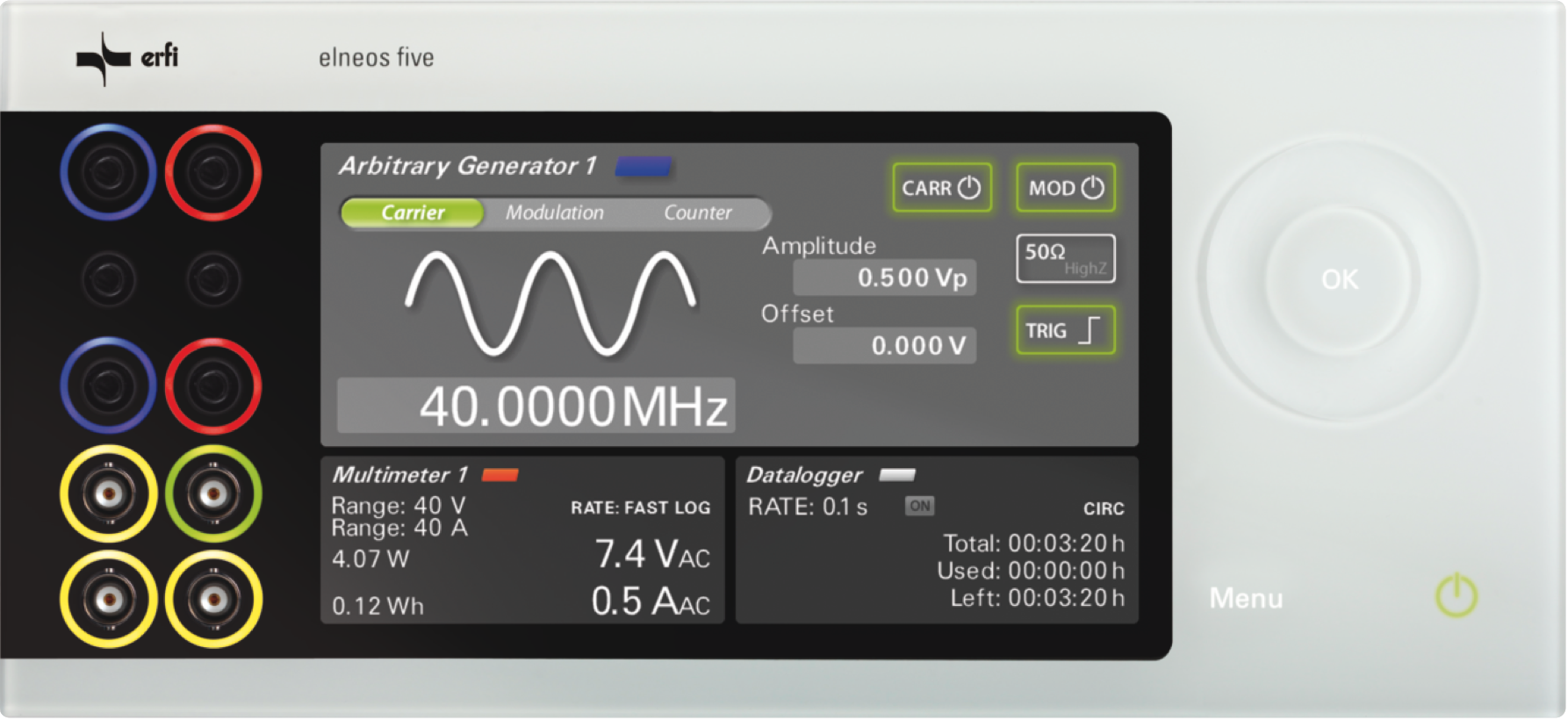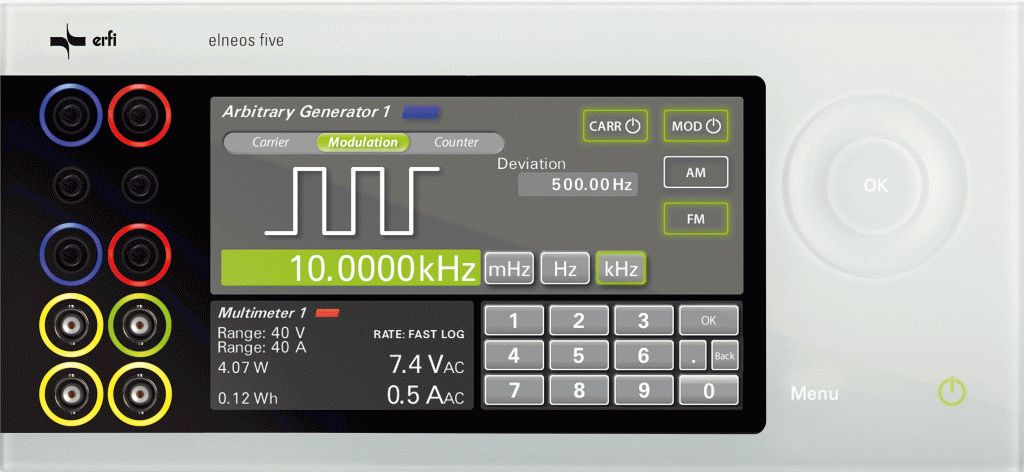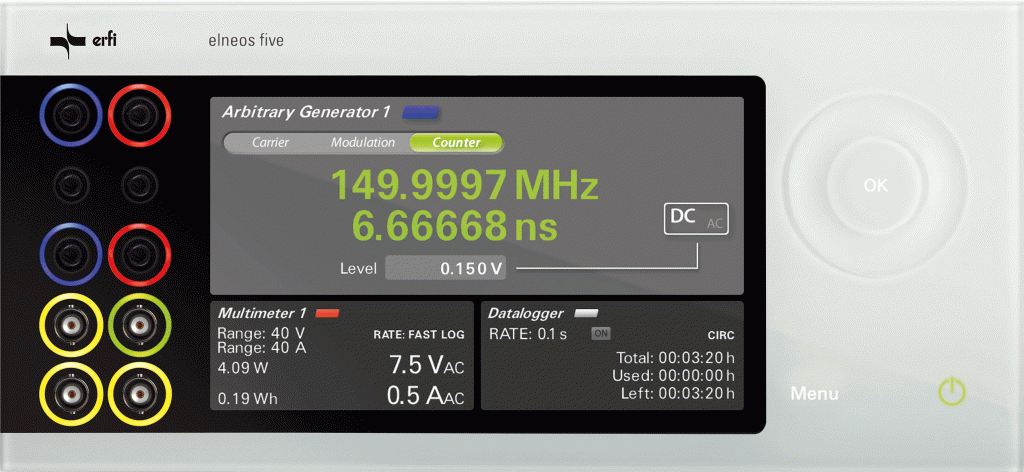
The device includes 2 function generators and uses the principle of direct digital synthesis (DDS) with the associated benefits of stable frequency and low distortion signal generation. The maximum output frequency of both generators (which is up to 40 MHz) as well as the amplitude level (with 30 Vss idling) are outstanding.
In combination with an adjustable duty cycle of 0.1 to 99.9%, elneos® five offers further functions such as sweep, an external and internal trigger for defined starting conditions, programmable single and multiple impulses etc. An optional counter up to 150 MHz guarantees the detection of fast signals and all device states can be read out at any time.
Freely programmable modulation
The carrier signals and the useful signals (modulation signal) can be parameterized completely independently of each other on the basis of the two function generators. The modulated signal is delivered at the output. A separate second external source or a second function generator is therefore no longer necessary. The carrier signal and the useful signal can be generated in the device accordingly. The result of the modulation is immediately visible and the parameters of the signals can be adapted very quickly to achieve the desired result.
All parameters of the carrier signals and the useful signals (modulation signal), e.g. Waveforms (sine, square, triangle, etc.), amplitude, frequency, duty cycle are stored separately and output modulated at the output. The depth of the modulation can be adjusted from 0 - 100%.
The device controls frequency modulation (FM), amplitude modulation (AM), pulse width modulation (PWM), burst and sweep function (special form of frequency modulation) for both function generators.



Frequency sources
Two independently programmable function generators; The technical data are valid for both function generators.
Frequency characteristics
Sine: 1 μHz to 40 MHz!
Trapezoid: 1 μHz to 5 MHz
Ramp: 1 μHz to 5 Mhz
Amplitude
Resolution for all signal types: 14 bit (16.384)
Output: 30 Vss, 50 Ω from 0-20 MHz, 1.8mV resolution
Output: 20 Vss, 50 Ω from 0-40 MHz, 1.8mV resolution
Impulse
Single pulse: single and multiple pulses up to 999 s
Burst mode freely programmable by parameters
Pulse and break times: up to 999 s
Number of repetitions: 1 to ∞
Trigger pulses
Externally via BNC socket;
Internal via menu for defined signal start;
Setting
Frequency: 100 mHz to 40 MHz !, resolution 1μHz
Amplitude: 0 to 30 Vss ± 0.5 dB + 1mV from the input. value
Duty Cycle Rectangle: 0 to 100% in 0.1% increments
Offset: 0 to ± 15,000V
Frequency counter
Measuring range: 150 MHz, optional up to 1.5 GHz
Input voltage: 100 mVeff to 5 Veff
Total Harmonic Distortion (THD)
Sine: 0 MHz to 1 MHz <1%
Sine: 1 MHz to 20 MHz <5%
Sine: 20 MHz to 40 MHz <6%
Outputs
Illuminated BNC laboratory sockets with disappearance effect
Output: up to 30 Vss idle
Output: 5V TTL compatible
Inputs
Illuminated BNC laboratory sockets with disappearance effect
Input: counter input ext. Input signals up to 150 MHz, opt. up to 1.5 GHz
Input: Trigger input for defined signal start
Input sensitivity: 100 mVeff